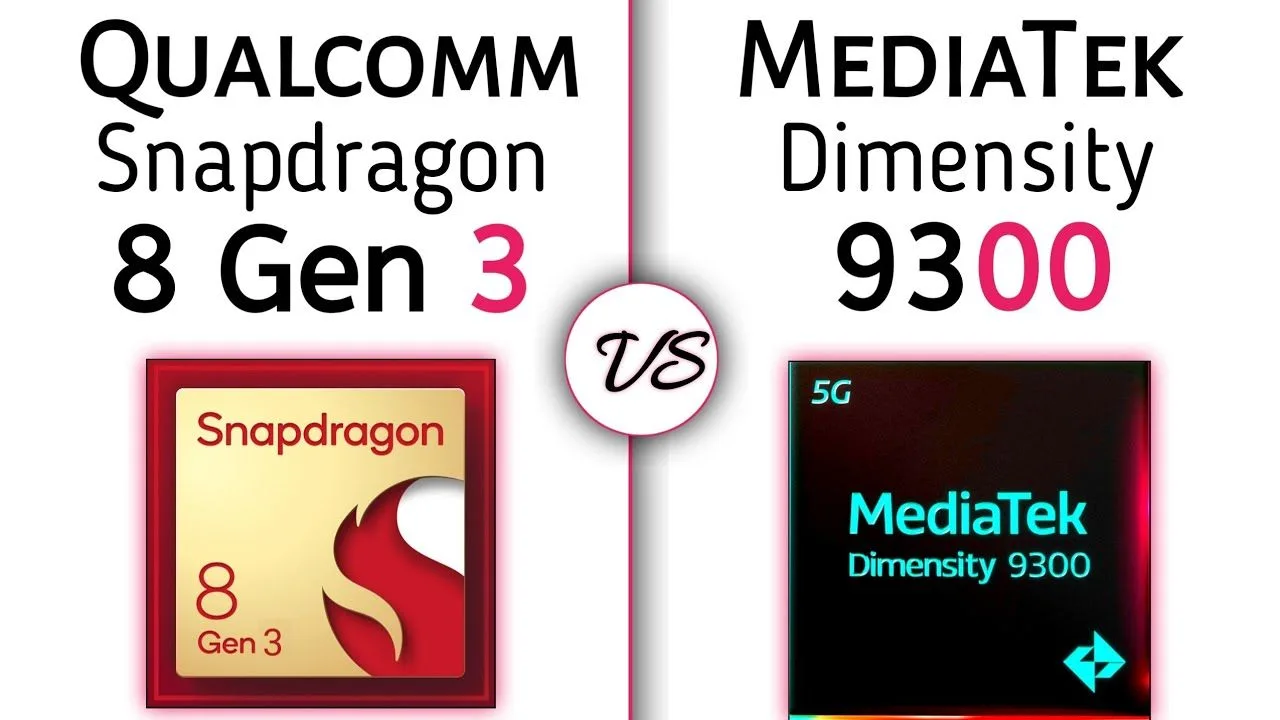flagship smartphone processors: Qualcomm and MediaTek continue the battle for Android chipset dominance, and their newest flagships Snapdragon 8 Gen 3 and Dimensity 9300, are designed to drive top-end smartphones for 2024. Both chips are performance flagships but differ in design, GPU performance, and efficiency. It is a detailed comparison that will lead you to pick one that suits you best.
Read More: Google Pixel 9 Pro Fold vs Honor Magic V3: Foldable Innovation
Read More: Samsung Galaxy Z Flip 6 vs Oppo Find N3 Flip: Compact Foldable Clash
Performance and Architecture
The Snapdragon 8 Gen 3 is based on the 4nm TSMC process with a 1+5+2 CPU configuration and up to 3.3GHz peak Cortex-X4 core. The Dimensity 9300 commits fully to a full big-core strategy with four Cortex-X4 and four Cortex-A720 cores. This makes the Dimensity 9300 more aggressive based on pure performance, especially on multi-core workloads.
CPU Benchmark Comparison
The Dimensity 9300 and the Snapdragon 8 Gen 3 perform excellent scores in CPU benchmarks. Nevertheless, the former trumps the latter slightly in multi-core activities because of its all-big-core design. Qualcomm’s chipset still surpasses, though, when it comes to single-core operations and is slightly better when it comes to activities such as application launch and UI performance.
GPU and Gaming Performance
Snapdragon 8 Gen 3 is driven by Adreno 750 GPU, which is extremely gaming-tuned with ray tracing and silky smooth frame rates. MediaTek Dimensity 9300 is driven by Immortalis-G720 GPU, which is powerful but not too stable for heavy-duration gaming. In practical terms, Snapdragon’s gaming performance is silky smooth with better thermal efficiency and thus a favorite among gamers.
AI and Machine Learning Capability
Both chipsets feature on-board high-end AI processors but take advantage of the Hexagon NPU in Qualcomm and the capability to execute quicker on-device AI streams and achieve more power savings in the Snapdragon 8 Gen 3. Dimensity 9300 has support for next-gen AI features, especially photography and text processing, but Qualcomm holds the edge in real-time AI support and mass market app support.
Power Efficiency and Thermals
Due to its mixed-core architecture, the Snapdragon 8 Gen 3 tends to be cooler and more power-efficient when loaded. Though immensely powerful, the Dimensity 9300 does heat up when heavily loaded due to its performance-focused cores. This affects battery life and thermal throttling in some scenarios.
Final Verdict: Snapdragon Wins on Balance, Dimensity Takes It for Power
If you’d like the optimal benchmarking performance at the cost of all else, then Dimensity 9300 is better. For the average consumer who needs an optimally balanced experience with best gaming, enhanced thermals, and battery life, however, the Snapdragon 8 Gen 3 is better. Both are phenomenal, and the choice is yours based on your smartphone usage.










